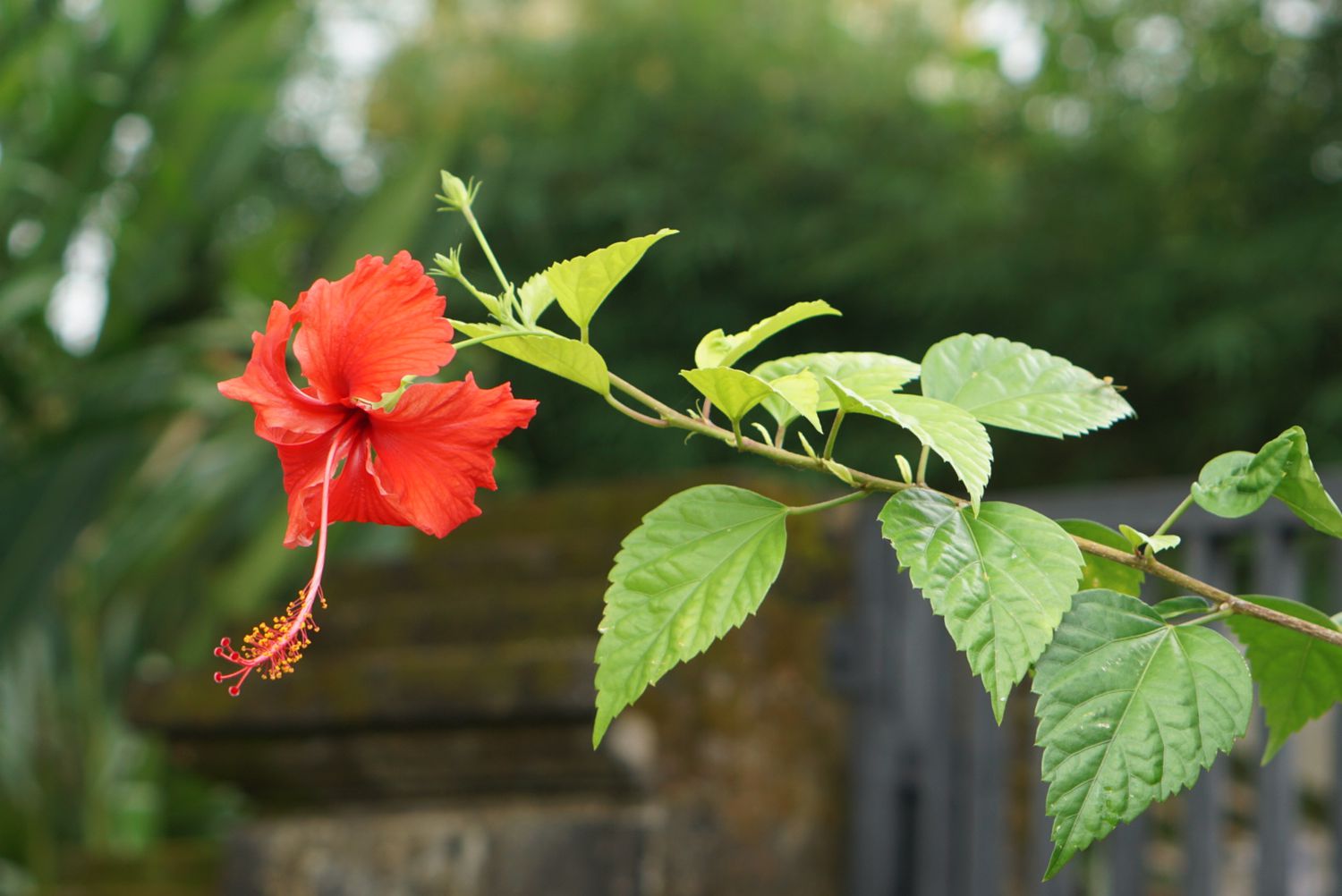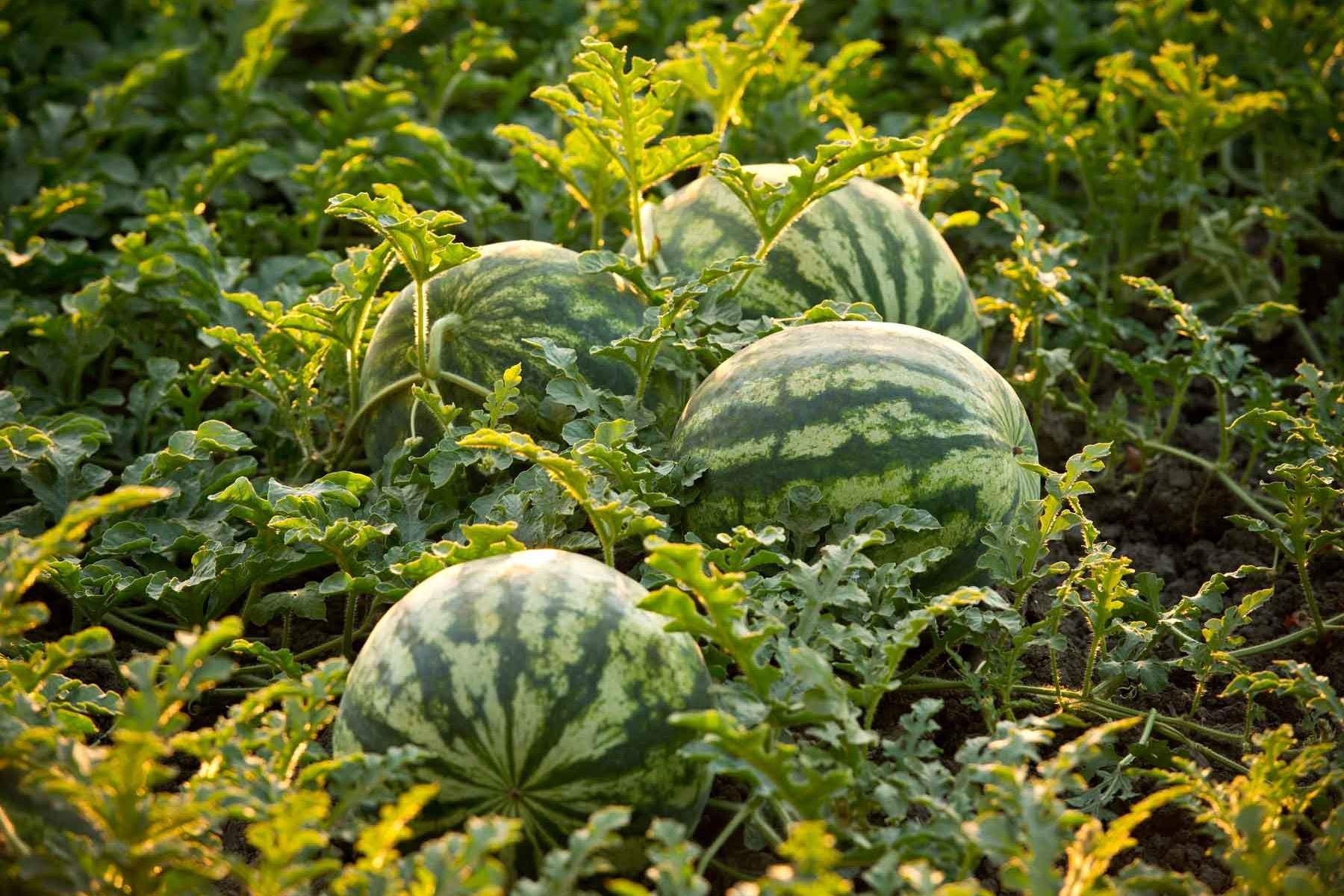Home>Home and Garden>Unlock The Secret To Getting Your Hibiscus Plant To Bloom!


Home and Garden
Unlock The Secret To Getting Your Hibiscus Plant To Bloom!
Modified: March 3, 2024
Discover the ultimate guide to blooming hibiscus plants at home and garden. Uncover the secrets to achieving beautiful blooms effortlessly!
(Many of the links in this article redirect to a specific reviewed product. Your purchase of these products through affiliate links helps to generate commission for Noodls.com, at no extra cost. Learn more)
Table of Contents
Introduction
Hibiscus plants are renowned for their stunning, vibrant blooms, which can instantly elevate the aesthetic appeal of any garden or indoor space. However, coaxing these tropical beauties into producing their iconic blossoms can sometimes prove to be a challenging endeavor. If you've found yourself frustrated by the lack of blooms on your hibiscus plant, fear not – you're not alone. Many hibiscus enthusiasts encounter difficulties in getting these plants to bloom to their full potential.
In this comprehensive guide, we will delve into the intricate world of hibiscus plants, shedding light on the various factors that influence their blooming behavior. Whether you're a seasoned gardener seeking to enhance your hibiscus cultivation skills or a novice enthusiast eager to unlock the secrets of successful hibiscus blooming, this article is tailored to provide you with valuable insights and practical tips.
By understanding the unique characteristics of hibiscus plants and the specific conditions that promote prolific blooming, you'll be well-equipped to nurture your hibiscus to its full flowering potential. From optimizing sunlight exposure to implementing proper watering and fertilization practices, we'll explore the essential strategies that can help you transform your hibiscus plant into a blooming spectacle.
So, if you're ready to embark on a journey to unravel the mystery behind hibiscus blooming and unleash the full splendor of these exquisite plants, let's dive into the fascinating world of hibiscus cultivation and discover the key to nurturing thriving, blooming hibiscus plants.
Understanding Hibiscus Plants
Hibiscus plants, belonging to the Malvaceae family, encompass a diverse group of flowering shrubs and trees that are revered for their striking, trumpet-shaped blossoms. These vibrant flowers come in an array of captivating colors, including radiant reds, sunny yellows, and mesmerizing pinks, adding a touch of tropical allure to any landscape. Renowned for their ornamental appeal, hibiscus plants are widely cherished by gardeners and horticulturists alike.
One of the most distinctive features of hibiscus plants is their large, showy flowers, which serve as the focal point of their visual allure. These blossoms typically boast five petals and a prominent central stamen, creating a visually captivating display that draws the gaze of onlookers. The lush, glossy foliage of hibiscus plants further enhances their aesthetic appeal, providing a verdant backdrop for the resplendent blooms.
Hibiscus plants are native to warm, tropical regions, thriving in environments characterized by ample sunlight, high humidity, and well-drained soil. Their preference for warmth and moisture makes them particularly well-suited for cultivation in subtropical and tropical climates. However, with the advent of hybridization and selective breeding, hibiscus varieties have been developed to withstand a broader range of climatic conditions, enabling their successful growth in diverse geographical locations.
These versatile plants can be cultivated as both outdoor specimens and indoor potted plants, offering flexibility in terms of landscaping and interior décor. While outdoor hibiscus plants can reach impressive heights, indoor varieties are often more compact, making them suitable for adorning windowsills and indoor spaces with their captivating blooms.
In terms of growth habits, hibiscus plants can exhibit either shrub-like or tree-like characteristics, with some species capable of growing into small trees reaching several meters in height. The growth patterns and habits of hibiscus plants can vary widely depending on the specific species and environmental conditions in which they are cultivated.
With their exquisite flowers, lush foliage, and adaptability to various growing environments, hibiscus plants have secured a prominent place in the realm of ornamental horticulture. Understanding the unique attributes and growth requirements of these captivating plants is essential for successfully nurturing them and encouraging prolific blooming, which we will explore in further detail in the subsequent sections.
Factors Affecting Blooming
The blooming behavior of hibiscus plants is influenced by a myriad of factors, each playing a pivotal role in determining the frequency, abundance, and vibrancy of their blossoms. Understanding these factors is crucial for creating an optimal environment that encourages prolific blooming and ensures the overall well-being of hibiscus plants. Let's delve into the key elements that significantly impact the blooming of hibiscus plants:
1. Sunlight Exposure:
Hibiscus plants thrive in bright, direct sunlight, requiring at least six hours of sun exposure daily to stimulate robust blooming. Inadequate sunlight can impede the plant's ability to produce flowers, resulting in sparse or stunted blooming. Ensuring that hibiscus plants are situated in a location with ample sunlight is essential for promoting healthy growth and abundant flowering.
2. Temperature and Climate:
The blooming of hibiscus plants is closely linked to temperature and climate conditions. These plants favor warm, tropical environments and are sensitive to cold temperatures. Exposure to frost or prolonged periods of chilly weather can hinder blooming and may even cause damage to the plant. Maintaining a consistently warm climate, whether through outdoor cultivation in suitable regions or indoor temperature control, is essential for encouraging prolific blooming.
3. Watering Practices:
Proper watering is critical for the blooming success of hibiscus plants. Overwatering can lead to root rot and nutrient leaching, negatively impacting blooming, while underwatering can result in stress and diminished flower production. Finding the right balance by providing consistent moisture without waterlogging the soil is essential for supporting healthy blooming.
4. Soil Quality and Nutrition:
The quality of the soil and its nutrient composition significantly influence the blooming capacity of hibiscus plants. Well-draining, nutrient-rich soil that provides essential minerals and organic matter fosters robust growth and flowering. Additionally, the application of a balanced fertilizer formulated specifically for flowering plants can enhance blooming and overall plant vitality.
5. Pruning and Maintenance:
Regular pruning and maintenance play a crucial role in promoting blooming. Pruning encourages new growth and stimulates flower production by removing old, spent blooms and shaping the plant for optimal sunlight exposure. Additionally, addressing pest infestations and diseases promptly is essential for preventing stress and ensuring uninterrupted blooming.
By comprehensively addressing these factors and implementing appropriate care practices, hibiscus enthusiasts can create an environment that fosters prolific blooming, allowing these captivating plants to flourish and showcase their resplendent blossoms to the fullest extent.
Tips for Getting Your Hibiscus Plant to Bloom
-
Optimize Sunlight Exposure: Position your hibiscus plant in a location that receives at least six hours of direct sunlight daily. This ample sunlight is crucial for stimulating robust blooming and ensuring the plant's overall health and vitality.
-
Maintain Warmth and Climate Consistency: Hibiscus plants thrive in warm, tropical environments and are sensitive to cold temperatures. Protect them from frost and chilly weather, ensuring a consistently warm climate to promote prolific blooming.
-
Implement Proper Watering Practices: Find the delicate balance between providing adequate moisture and avoiding waterlogging. Consistent, moderate watering is essential for supporting healthy blooming without subjecting the plant to stress from overwatering or underwatering.
-
Prioritize Soil Quality and Nutrition: Cultivate your hibiscus in well-draining, nutrient-rich soil that offers essential minerals and organic matter. Additionally, apply a balanced fertilizer formulated for flowering plants to enhance blooming and overall plant vigor.
-
Embrace Regular Pruning and Maintenance: Engage in routine pruning to remove spent blooms and stimulate new growth, thereby encouraging continuous flower production. Address pest infestations and diseases promptly to prevent stress and ensure uninterrupted blooming.
-
Provide Adequate Space for Growth: Allow ample space for your hibiscus plant to grow and expand, preventing overcrowding that can impede blooming. Ensure that neighboring plants or structures do not obstruct sunlight from reaching the hibiscus.
-
Monitor Humidity Levels: Hibiscus plants thrive in moderately humid environments. If you're cultivating them indoors, consider employing a humidifier to maintain optimal humidity levels, fostering an environment conducive to prolific blooming.
-
Be Mindful of Pot Size: If growing hibiscus in pots, ensure that the container provides sufficient room for root development. Transplant into larger pots as the plant grows to prevent root constriction, which can hinder blooming.
By incorporating these tips into your hibiscus care regimen, you can create an environment that nurtures flourishing, blooming hibiscus plants, allowing them to showcase their captivating blossoms to their full potential.
Common Mistakes to Avoid
-
Inadequate Sunlight Exposure: One of the most common mistakes that hibiscus enthusiasts make is depriving their plants of sufficient sunlight. Inadequate sun exposure can severely hinder blooming, leading to sparse or stunted flowers. It's essential to ensure that your hibiscus plant receives at least six hours of direct sunlight daily to promote robust blooming and overall plant health.
-
Overwatering or Underwatering: Erratic watering practices can significantly impede blooming. Overwatering can lead to root rot and nutrient leaching, causing stress and inhibiting flower production. On the other hand, underwatering can result in wilted foliage and diminished blooming. Finding the right balance by providing consistent, moderate moisture without waterlogging the soil is crucial for supporting healthy blooming.
-
Neglecting Soil Quality: Poor soil quality can severely impact the blooming capacity of hibiscus plants. Soil that lacks proper drainage or essential nutrients can hinder growth and flowering. It's important to cultivate hibiscus in well-draining, nutrient-rich soil and supplement with a balanced fertilizer formulated for flowering plants to optimize blooming potential.
-
Ignoring Pruning and Maintenance: Neglecting regular pruning and maintenance can impede blooming by inhibiting new growth and flower production. Failure to remove spent blooms and address pest infestations promptly can lead to diminished blooming and overall plant vigor. Engaging in routine maintenance practices is essential for encouraging continuous blooming.
-
Inadequate Space for Growth: Planting hibiscus in cramped spaces or failing to provide sufficient room for growth can hinder blooming. Overcrowding can restrict airflow and sunlight exposure, negatively impacting the plant's ability to produce abundant flowers. Ensuring that neighboring plants or structures do not encroach upon the hibiscus's space is crucial for promoting prolific blooming.
Avoiding these common mistakes and implementing proactive care practices will significantly enhance the blooming capacity of your hibiscus plants, allowing them to thrive and adorn your garden or living space with their resplendent blossoms.
Conclusion
In conclusion, nurturing hibiscus plants to bloom abundantly is a rewarding endeavor that requires a comprehensive understanding of their unique growth requirements and blooming behavior. By delving into the intricate factors that influence blooming, such as sunlight exposure, temperature, watering practices, soil quality, and maintenance, hibiscus enthusiasts can cultivate an environment that fosters prolific blooming and ensures the overall well-being of these captivating plants.
Optimizing sunlight exposure is paramount, as hibiscus plants thrive in bright, direct sunlight. Providing at least six hours of daily sun exposure is essential for stimulating robust blooming and supporting the plant's vitality. Additionally, maintaining a consistently warm climate and protecting hibiscus plants from cold temperatures and frost is crucial for encouraging prolific blooming.
Balancing watering practices to provide consistent, moderate moisture without waterlogging the soil is essential for supporting healthy blooming. Cultivating hibiscus in well-draining, nutrient-rich soil and supplementing with a balanced fertilizer formulated for flowering plants can significantly enhance blooming potential. Engaging in routine pruning and maintenance, addressing pest infestations promptly, and ensuring ample space for growth are vital for encouraging continuous blooming and preventing common pitfalls that can hinder flower production.
By embracing these insights and implementing the recommended tips while avoiding common mistakes, hibiscus enthusiasts can create an environment that nurtures flourishing, blooming hibiscus plants. Whether adorning outdoor landscapes or enhancing indoor spaces with their vibrant blooms, hibiscus plants have the potential to captivate and delight with their resplendent flowers.
As you embark on your journey to unlock the secrets of successful hibiscus blooming, remember that patience and attentive care are essential. Observing the gradual emergence of vibrant blossoms and witnessing the transformation of your hibiscus plants into thriving, blooming specimens is a gratifying experience that reflects the culmination of dedicated nurturing and horticultural expertise.
Ultimately, by applying the knowledge and strategies outlined in this guide, you can cultivate a flourishing hibiscus garden or indoor display that serves as a testament to your commitment to nurturing these exquisite plants to their full blooming potential. With the right care and attention, your hibiscus plants will reward you with a stunning profusion of blossoms, infusing your surroundings with the tropical allure and natural splendor of these remarkable flowering specimens.













